A Beginners Guide to Fin Rot in Aquarium Fish
If you’ve just started your fishkeeping journey, few things are more discouraging than noticing your fish’s beautiful fins looking ragged or shredded. Don’t panic as this is a common issue called fin rot. The good news is that it’s treatable, especially when caught early. This guide on fin rot care for beginners will walk you through what it looks like, why it happens, and how to fix it without overwhelming you.
What Exactly Is Fin Rot?
Fin rot isn’t a single disease — it’s usually a bacterial (and sometimes fungal) infection that attacks the delicate tissue of your fish’s fins and tail. In a healthy aquarium, fish fins stay smooth and intact, but in stressed conditions, bacteria or fungus can take hold. Think of it as the aquatic equivalent of a cut getting infected.
If left untreated, fin rot can progress from small frayed edges to deep tissue loss, making swimming difficult and lowering your fish’s overall health. But if spotted early and addressed calmly, most fish recover fully.
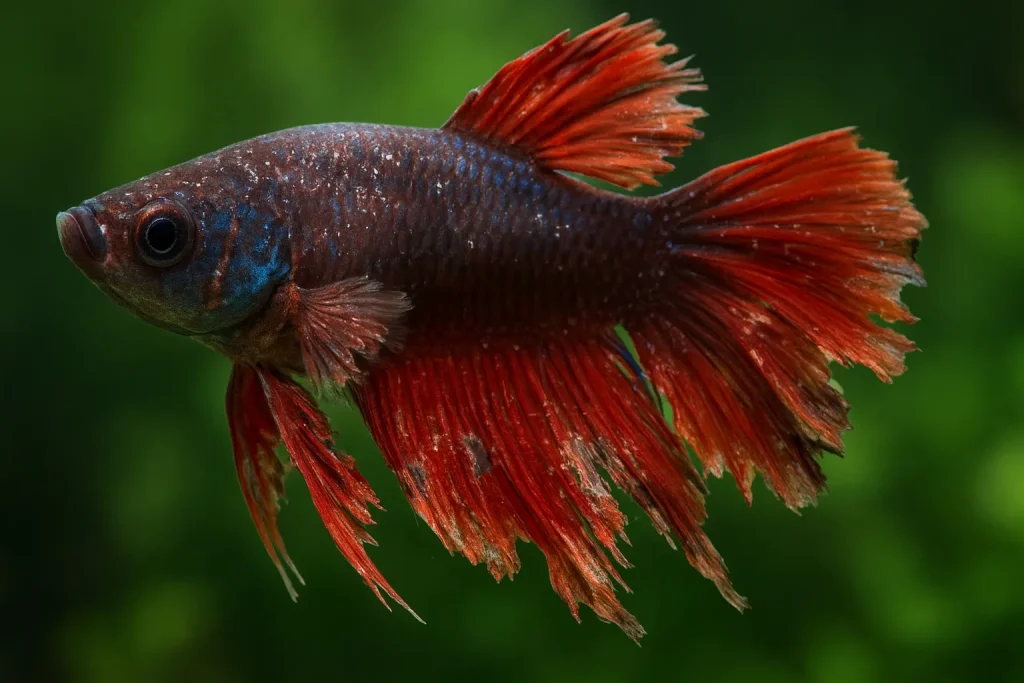
How to Recognize Fin Rot in Your Fish?
The earlier you notice changes, the easier treatment will be. Also, these tips will help you select fish without fin rot when purchasing from the aquarium. Once I bought home a pink Betta when in fact it was White Betta with fin rot, which caused pink fins. So to avoid such mistakes, when looking at your fish, pay attention to:
- Frayed or ragged edges – Fins look torn, uneven, or split.
- Discoloration – Edges may turn black, brown, or red depending on the fish’s color.
- Shortening fins – Over time, fins appear to shrink or melt away.
- Inflammation – The base of the fin may look red or swollen.
- Behavioral changes – Fish may become less active, hide more, or clamp their fins close to the body.
Many beginners mistake fin rot for nipping by aggressive tankmates. The difference? Nipped fins look torn but usually heal quickly, while fin rot keeps spreading and looks almost “eaten away.”
Red Flags That Mean Your Fish Needs Help
Not every torn fin is a medical emergency. But these warning signs mean you should act quickly:
- Fins keep deteriorating day by day.
- The fin edges look fuzzy which could mean fungal involvement.
- Your fish is lethargic, gasping, or refusing food.
- Red streaks are visible, suggesting infection is spreading.
When these show up, it’s time to adjust care and possibly use treatments.
What Causes Fin Rot?
Beginners often blame themselves, but fin rot isn’t about neglect. It’s mostly about conditions that allow bacteria or fungi to thrive. The most common triggers include:
- Poor water quality – High ammonia, nitrite, or nitrate irritate fins and weaken immunity.
- Overcrowding – Too many fish in too little space causes stress and nipping injuries.
- Aggressive tankmates – Fin-nippers (like tiger barbs or aggressive bettas) leave wounds that bacteria exploit.
- Stress – Temperature swings, poor diet, or sudden changes reduce a fish’s defenses.
- Dirty or sharp décor – Rough plastic plants and jagged ornaments can physically tear fins.
The root cause almost always ties back to stress + poor water which are two things within your control.
Which fish are more prone to Fin Rot?
Fin rot can affect almost any freshwater fish, but some species are more prone than others because of their long, delicate fins or their sensitivity to stress. Bettas are one of the most common victims, as their flowing tails and fins tear easily and make perfect entry points for bacteria. Fancy guppies, mollies, platies, and swordtails (all livebearers) are also frequent sufferers, especially in overcrowded community tanks where nipping and poor water conditions are common. Schooling fish like tetras and rasboras can develop fin rot if kept in too-small groups or in unstable water, while corydoras catfish and other bottom dwellers are at risk if waste builds up in the substrate. Essentially, any fish exposed to stress, poor water quality, or aggressive tankmates can develop fin rot, but species with elaborate fins or those often kept in beginner tanks are the most vulnerable.
How to Setup the tank to Prevent Fin Rot?
Creating a stable, healthy home is the best medicine. Here’s what beginners should know:
- Tank Size: Always match the fish to an appropriate tank (e.g., 10 gallons minimum for small community fish, more for active species). Overcrowding is a top cause of disease.
- Filtration: A gentle filter keeps water clean without creating stressful currents. A sponge filter or hang-on-back unit is perfect for small tanks.
- Water Parameters: Aim for ammonia and nitrites at 0 ppm, nitrates under 20 ppm. Most community fish thrive at 74–80°F, pH 6.8–7.6.
- Décor and Plants: Choose smooth rocks, driftwood, and live or silk plants. Avoid sharp plastic décor that tears fins.
- Lighting: Moderate, not too harsh. Fish need a calm day-night cycle.
Think of your aquarium as a “stress-free spa” for fish — stability is everything.
Feeding Tips for Strong Fins
Diet plays a huge role in immunity. Malnourished fish are far more likely to develop fin rot.
- What to feed: High-quality flakes or pellets made for your species, supplemented with frozen or live foods like brine shrimp or daphnia.
- Frequency: 1–2 small meals per day, only what they can eat in 2–3 minutes. Overfeeding leads to dirty water, which directly fuels disease.
- Variety: Rotate foods to prevent nutritional gaps. Even herbivores like mollies benefit from a mix of protein and plant matter.
Behavior and Temperament
Fish with fin rot may act differently, but prevention is easier when you understand normal behavior.
- Peaceful fish (like tetras, guppies, rasboras) rarely nip but suffer if crowded.
- Semi-aggressive fish (like bettas or gouramis) may nip others’ fins when stressed.
- Schooling fish do best in groups — keeping too few can stress them and trigger illness.
Observation is your best tool. Knowing what’s normal makes spotting problems easier.
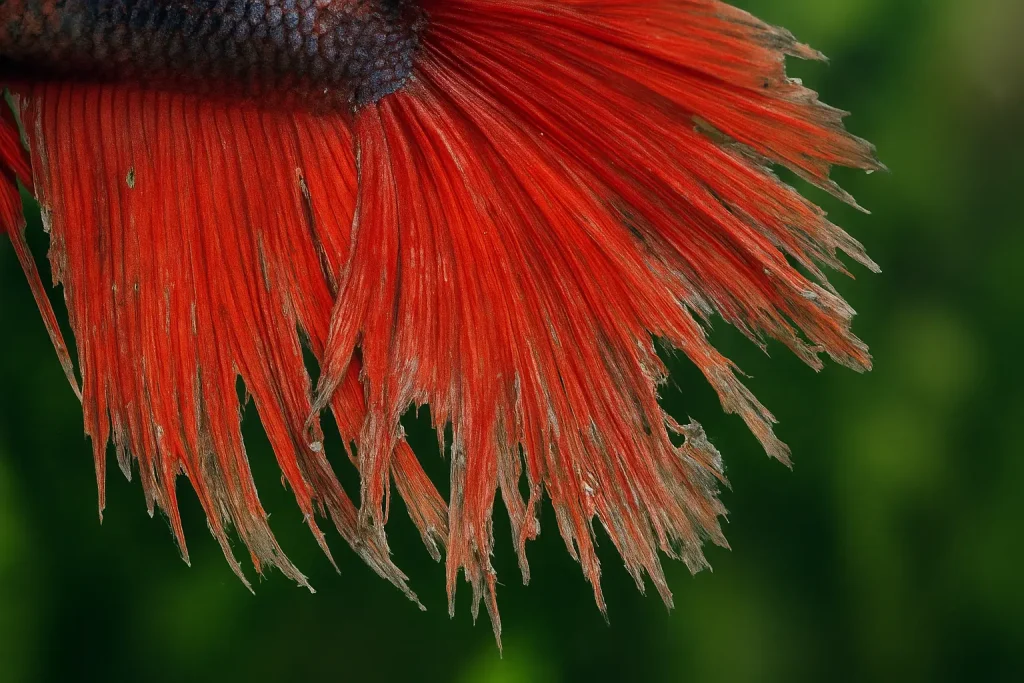
Treatment: How to Heal Fin Rot
If you’ve caught fin rot early, here’s a step-by-step plan to fix the issue.
- Improve Water Quality First you need to do a 25–50% water change. You need to test water parameters daily for a week. Also don’t forget to vacuum gravel to remove waste.
- Remove Stressors Next you should separate aggressive tankmates if fin-nipping is the cause. It is also important to smooth out rough décor which may cause more damage to fins.
- Add Aquarium Salt (Optional) The ideal dose is 1 teaspoon per 2 gallons which can reduce bacteria and help healing. But avoid with scaleless fish like corydoras and loaches as they are quite sensitive to salt.
- Consider Medications For quick recovery, antibacterial meds (like Maracyn or API Fin & Body Cure) for bacterial infections. or antifungal treatments if white fuzzy edges are present.
- Support Recovery It is important to feed a high-quality varied diet. Also make sure to keep tank lights dim and provide hiding spots to lower stress.
Most mild cases improve in 1–2 weeks with clean water alone. Severe cases may require isolation and medication.
Common Beginner Mistakes
- Skipping water changes – Fish live in their waste; fresh water is the #1 prevention tool.
- Overcrowding – Too many fish equals stress and faster disease spread.
- Confusing nipped fins with rot – If the edges keep deteriorating, it’s not just aggression.
- Overusing meds – Treat the cause first; don’t jump to chemicals without fixing water quality.
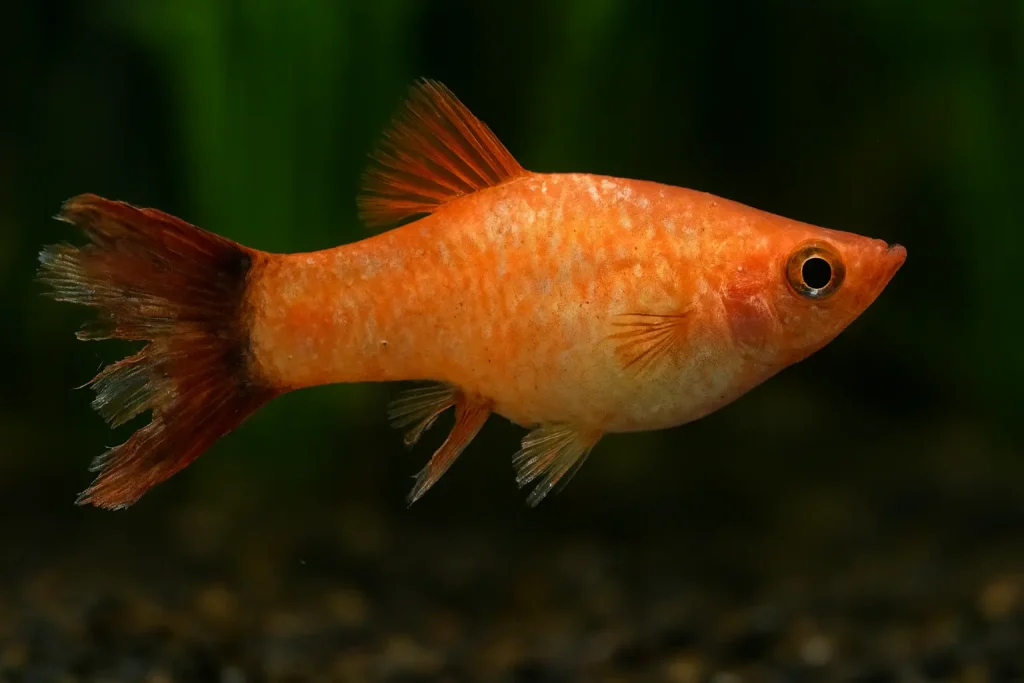
Best Care Tips to Reduce Stress
Since stress fuels disease, make your aquarium a calming place for both fish and humans:
- Keep the tank in a quiet room with soft lighting.
- Add live plants to create a natural vibe and hiding spots.
- Use a lid to prevent jumpers and reduce disturbances.
- Keep a simple maintenance routine: test weekly, change water every 1–2 weeks, feed consistently.
Your tank should feel like a little “zen garden” — low effort, steady rhythm, peaceful energy.
Backup Plans for Busy Weeks
Life happens, and sometimes you can’t keep up perfectly. That doesn’t mean your fish need to suffer:
- Vacation feeders: Slow-release feeder blocks or an automatic fish feeder prevent missed meals.
- Auto top-off systems: Keep water levels stable if evaporation is an issue.
- Tank sitter: Even a neighbor can help with one mid-week water check if you’re away.
Having these in place prevents stress spikes that lead to ill
Fin rot may look scary at first, but it’s one of the most treatable fish diseases when caught early. For beginners, it’s a wake-up call about how important water quality, tank harmony, and stress reduction really are.
If you stay consistent with maintenance, feed wisely, and choose compatible tankmates, your fish’s fins will heal beautifully — and you’ll feel more confident as a fishkeeper.

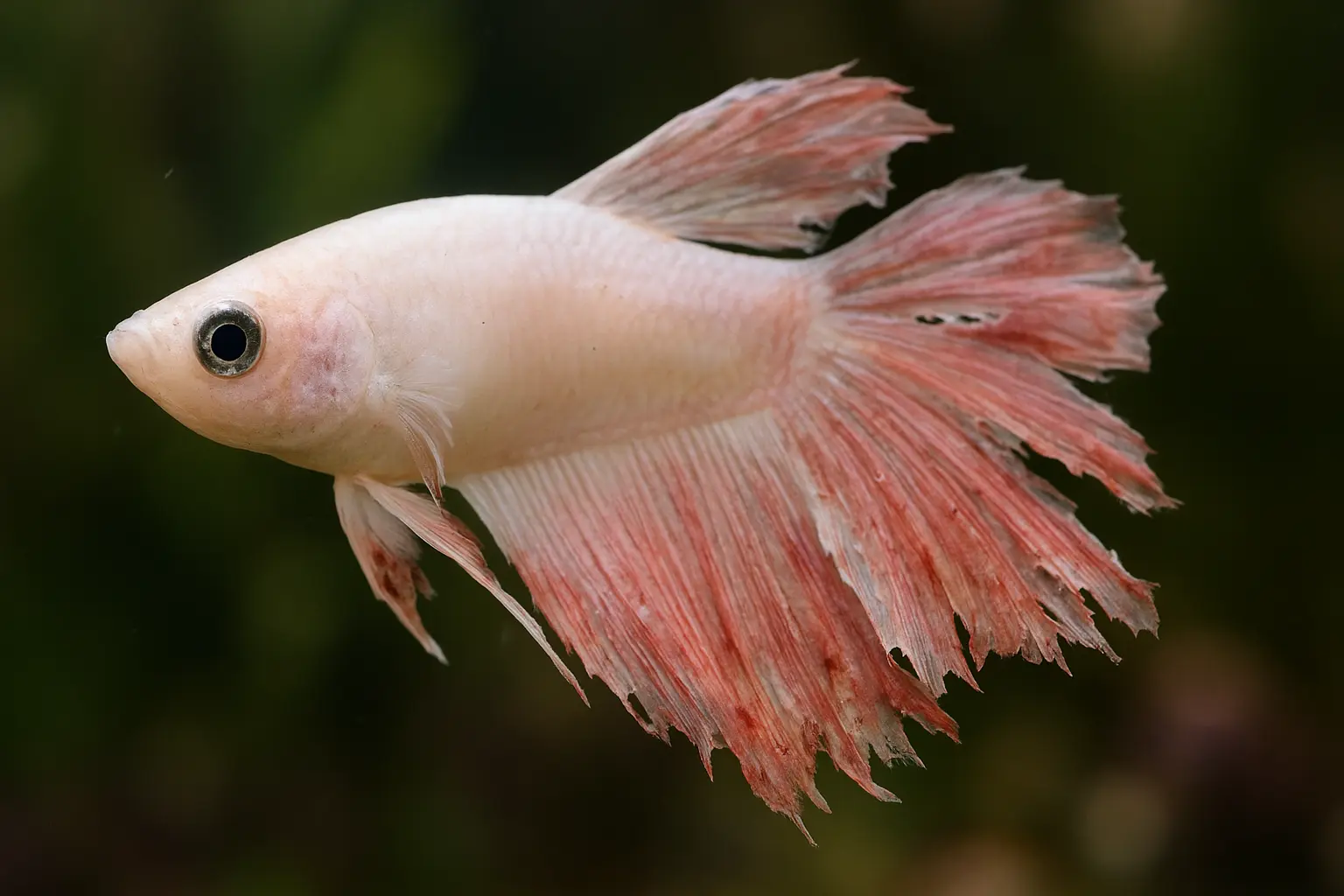
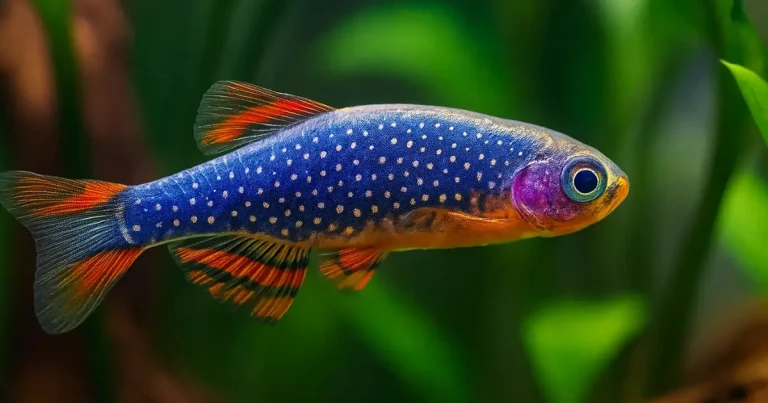
Leave a Reply